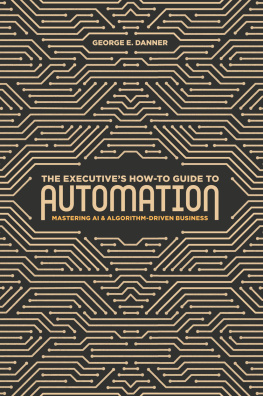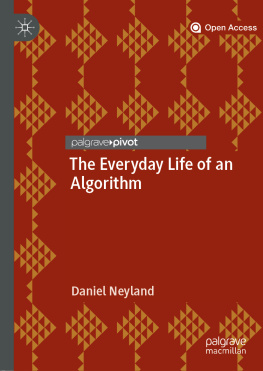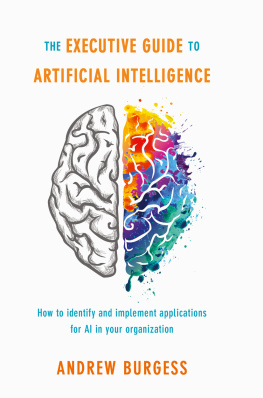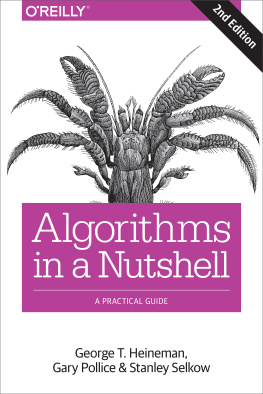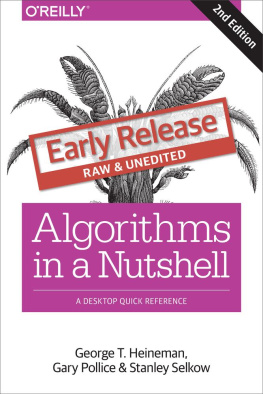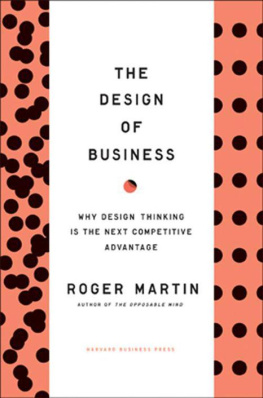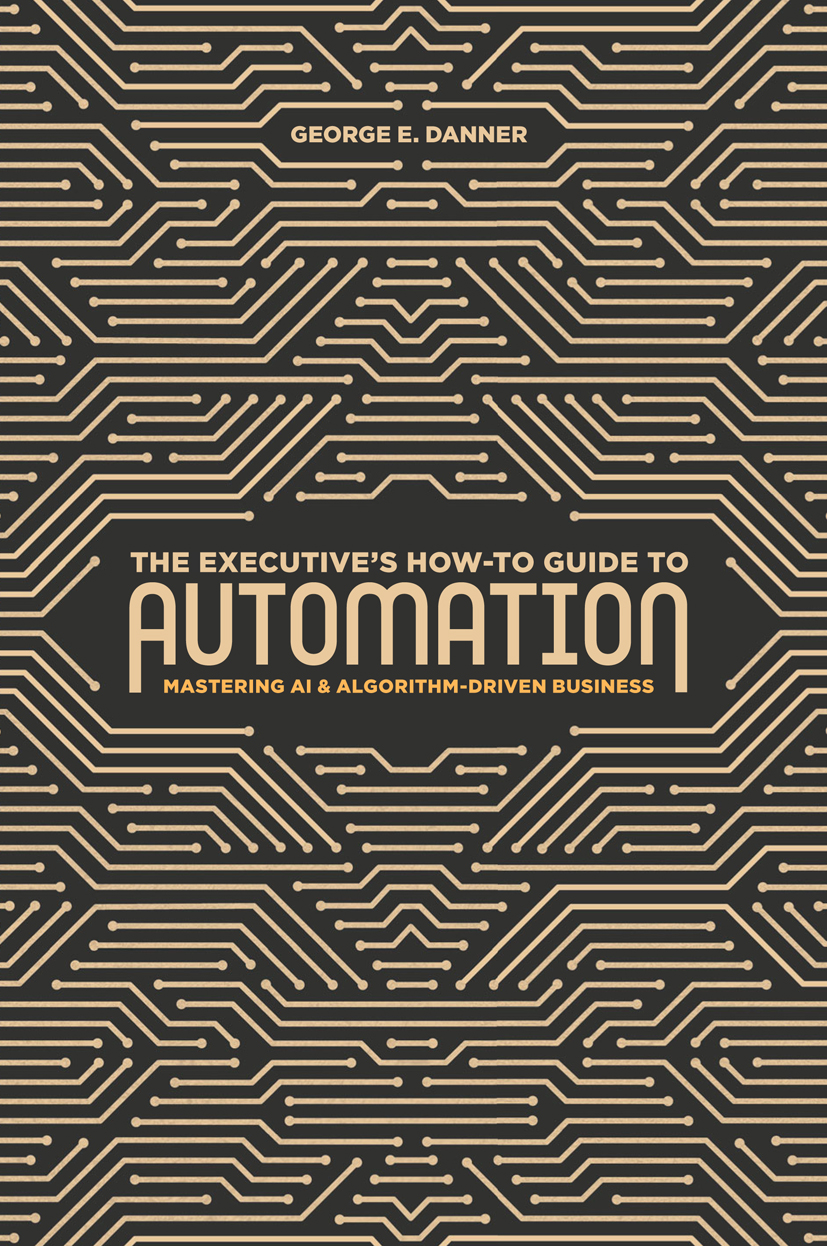George E. Danner
Business Laboratory LLC, The Woodlands, TX, USA
ISBN 978-3-319-99788-9 e-ISBN 978-3-319-99789-6
https://doi.org/10.1007/978-3-319-99789-6
Library of Congress Control Number: 2018958731
The Editor(s) (if applicable) and The Author(s) 2019
This work is subject to copyright. All rights are solely and exclusively licensed by the Publisher, whether the whole or part of the material is concerned, specifically the rights of translation, reprinting, reuse of illustrations, recitation, broadcasting, reproduction on microfilms or in any other physical way, and transmission or information storage and retrieval, electronic adaptation, computer software, or by similar or dissimilar methodology now known or hereafter developed.
The use of general descriptive names, registered names, trademarks, service marks, etc. in this publication does not imply, even in the absence of a specific statement, that such names are exempt from the relevant protective laws and regulations and therefore free for general use.
The publisher, the authors and the editors are safe to assume that the advice and information in this book are believed to be true and accurate at the date of publication. Neither the publisher nor the authors or the editors give a warranty, express or implied, with respect to the material contained herein or for any errors or omissions that may have been made. The publisher remains neutral with regard to jurisdictional claims in published maps and institutional affiliations.
Cover design by Thomas Howey
This Palgrave Macmillan imprint is published by the registered company Springer Nature Switzerland AG
The registered company address is: Gewerbestrasse 11, 6330 Cham, Switzerland
Preface
It is very hard to pin down the precise genesis for this book. But I will say that it is the culmination of a string of aha moments where I sat stunned at my terraced realization that algorithms are the stuff of profitable commerce.
I was formally trained as a mechanical engineer given my childhood fascination with household contraptions and growing up in a gritty, industrial town on the Texas Gulf coast. Soon I found myself collaborating on the design of valves and actuating devices, then broadening my experience with the automation of factories using specialized software during the manufacturing systems craze of the 80s and 90s. Later in life, I attended the Sloan School at MIT, where, without even realizing it at the time, my thinking was changing from a production orientation to business strategy, while weaving in the idea that systems science was equally useful in both domains. This is what I understood wellsystems, and I believe that the power of systems thinking is extraordinarily handy in these times of ever-increasing complexity.
My first book, Profit from Science , was devoted to the idea and practice of analytical problem solving using the Scientific Method. Research on that book took me around the world to study countless organizations and their approaches to complex business problems from supply chain optimization to smart pricing to competitive strategy to the management of risk. This experience brought me home to the idea that building a company of any size in an enduring way is desperately hard work, littered with lethal traps, and therefore no match for human intuition alone. It takes more than an assembly of smart, capable people doing good workrather, a key ingredient is the collective intelligence of humans intricately augmented by machines to craft a sequence of competitive advantages year on year. The best firms I observed not only recognized this, but have built deliberate structures, like computational sandboxes, to instill a factory-like institutional capability behind it.
Stephen Wolframs A New Kind of Science , released in 2003, was an astounding work, the result of a decade of hermit-like existence to produce its 800 pages (and half again with end notes). That book taught us all that small programs need not be complex themselves to produce complex, and often astonishingly brilliant results. This fundamentally changed my thinking about who could participate in algorithm design. If small programs could be so powerful, why couldnt ordinary peoplethose without extensive backgrounds in programmingbuild small programs? The fact of the matter is that they can, and they should. Stephen Wolfram showed me that remarkable possibility.
As a parent of three amazing children, I felt as though I had a front row seat on the process of learning. Each one unique in his and her own right, bounded through childhood absorbing life in ways that astounded and surprised me. My oldest daughter learning a foreign language, my son learning how to install car audio systems, my youngest daughter learning to ride a horseall of this coming to them at a remarkably young age. Therein lay even more clues as to how all humans systematically acquire rules and effortlessly store them away for later recall.
I think back to the innumerable conversations with colleagues around the world on the grand trifecta of intelligence, technology, and strategy. Stephen Wolfram was himself one of the remarkable thinkers who gave me keen insight into scientific thinking, which overlaid with discussions of strategy with leading CEOs of our time. The juxtaposition of science and strategy led me to the discovery that science and business can energize each other in powerful ways to produce extraordinary value.
Lest you think this book represents a linear path to a single viewpoint, let me correct that for the recordmany, many colleagues disagreed with my original thinking, challenged most of my beliefs, and generally told me I had failed to grasp the many subtleties embedded in the simple premise that algorithms could be created by anyone, and monetized by any organization. Thankfully, the thoughts in these pages have been vetted in the crucible of hearty debate among some of the wisest and most experienced business leaders I know.
One of those colleagues, a dear friend of mine from London, Peter Franklin, introduced me to The Rise of the Robots just at the time I was thinking about writing this, my second book. To be honest I didnt think much of the premise, nicely summarized in the subtitle: Technology and the Threat of a Jobless Future . I consider myself neither influential enough nor wise enough to stave off something as formidable as global mass unemployment. Rather, I read the book with an entirely different goal: how did the author Martin Ford, a successful Silicon Valley entrepreneur, describe a plausible future where the automation of tasks considered unautomatable like writing a symphony and grading essay questions become reality? Not just a reality but a dominant feature of the global economy. This really started my minds gears grinding. I asked myself these questions: If automation is going to be so vital, so inevitable, what will the winners in such an era look like? What can traditional firms do today to thrive in the transformation? Are there entirely new roles and skills required by this future?
The thought experiment led me to conclude that ubiquitous automation is indeed an unavoidable, permanent fixture of the coming economy. If that is the case, then what are the molecules of automation, the ingredients that give rise to it, the tangible objects that are precisely engineered to make the work happen? Clearly, this led me to look at

